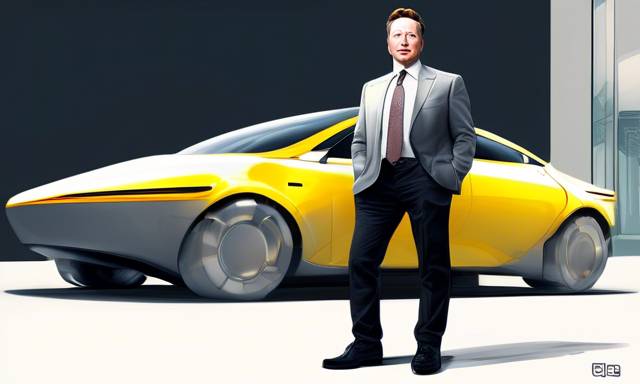Elon Musk Unveils the Cyber Cab: Highlights and Common Disappointments 🚖
Elon Musk’s recent event showcasing the much-anticipated Robotaxi, known as the Cyber Cab, has sparked a mixture of excitement and letdown among many enthusiasts and investors. Hailing from the brainchild of Tesla, the event aimed to provide insights into the futuristic vehicle’s features and capabilities. However, several aspects that attendees were eager to learn about fell short of expectations. This unveiling brought attention to the boundaries between innovation and reality, leaving many to wonder about the future of transportation.
Event Overview and Features of the Cyber Cab 🚗
During the unveiling, Musk presented a vehicle designed to revolutionize urban mobility. The Cyber Cab showcases unique characteristics, including:
- No Steering Wheel or Pedals: Emphasizing a fully autonomous experience.
- Front-Facing Seats: Designed to provide comfort and a social atmosphere for passengers.
- Butterfly Wing Doors: Adding a touch of design flair while facilitating easy access.
While these features generated genuine excitement, certain elements left attendees wanting more clarity.
Unresolved Expectations and Major Surprises 🧐
Despite the array of features presented, there was a palpable absence of detailed information regarding:
- Production Timeline: Although Musk suggested a potential production start in 2026, many found this timeline unclear given his history of inaccurate projections.
- Business Model: Attendees expected a deeper discussion about Tesla’s future ride-hailing application and the proposed operational frameworks, but these discussions remained vague.
- Robo Van Prototype: While participants anticipated more vehicular designs, the focus shifted unexpectedly to a singular prototype, leaving many curious about the broader vision.
Innovations in the Humanoid Robot Space 🤖
Musk also addressed developments in humanoid robotics during the event, notably the Optimus robot. He shared intriguing insights into its potential market price, estimating it could range between $20,000 and $330,000. This indicates a significant leap in robotic technology aimed at assisting daily tasks in homes. The idea of having a personal assistant robot akin to R2D2 seems exciting yet introduces questions regarding affordability and accessibility.
Future Implications for the Autonomous Vehicle Market 🌍
As Tesla aims to position itself as a leader in autonomous transport, the conversation around the infrastructure and regulations required for the operational implementation of Robotaxis will intensify. Stakeholders, including investors and transport authorities, are eager for a comprehensive understanding of:
- Integration with Current Fleet: Clarity on how existing Tesla vehicles will fit into the projected ride-hailing service.
- Consumer Engagement: The extent to which consumers will have ownership opportunities versus using Tesla’s fleet.
- Regulatory Challenges: Anticipated hurdles on how to navigate varying regulations on autonomous vehicles across different regions.
Hot Take: Reflections on the Robotaxi Unveiling 💭
The introduction of the Cyber Cab is undeniably a step towards a new era in transportation innovation. With its standout features and ambitious production goals, it sets the bar high. However, the lack of substantial answers about operational frameworks and timelines leaves room for skepticism. While Musk’s confidence is well-known, the unpredictability of timelines raises concerns among potential users and investors. The future promises a world with autonomous vehicles, but the road to achieving that vision remains layered with complexities and unforeseen challenges. As the industry evolves, participants will be keen to see how well Tesla adapts and addresses the gaps outlined during this year’s event.





 By
By
 By
By
 By
By
 By
By

 By
By